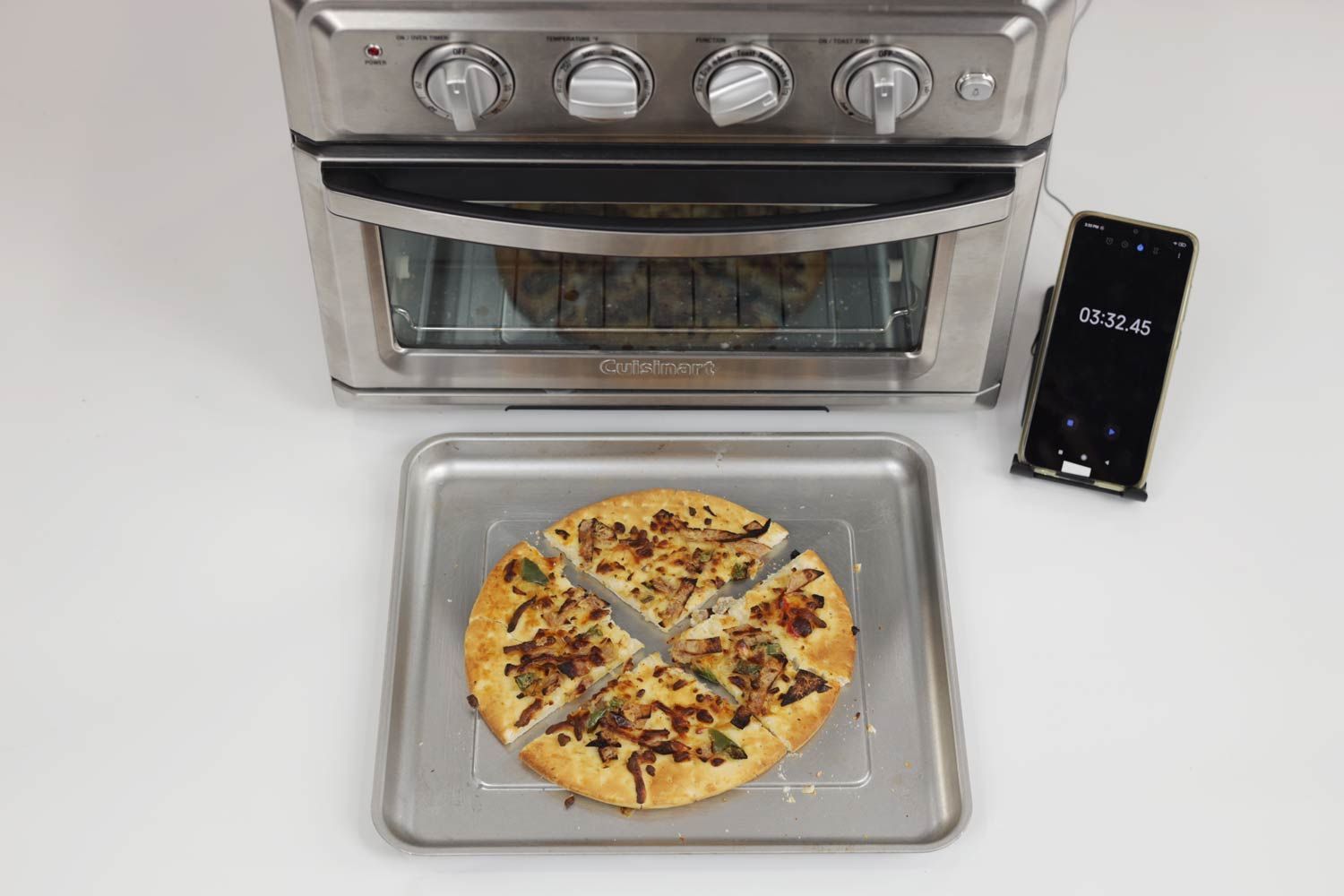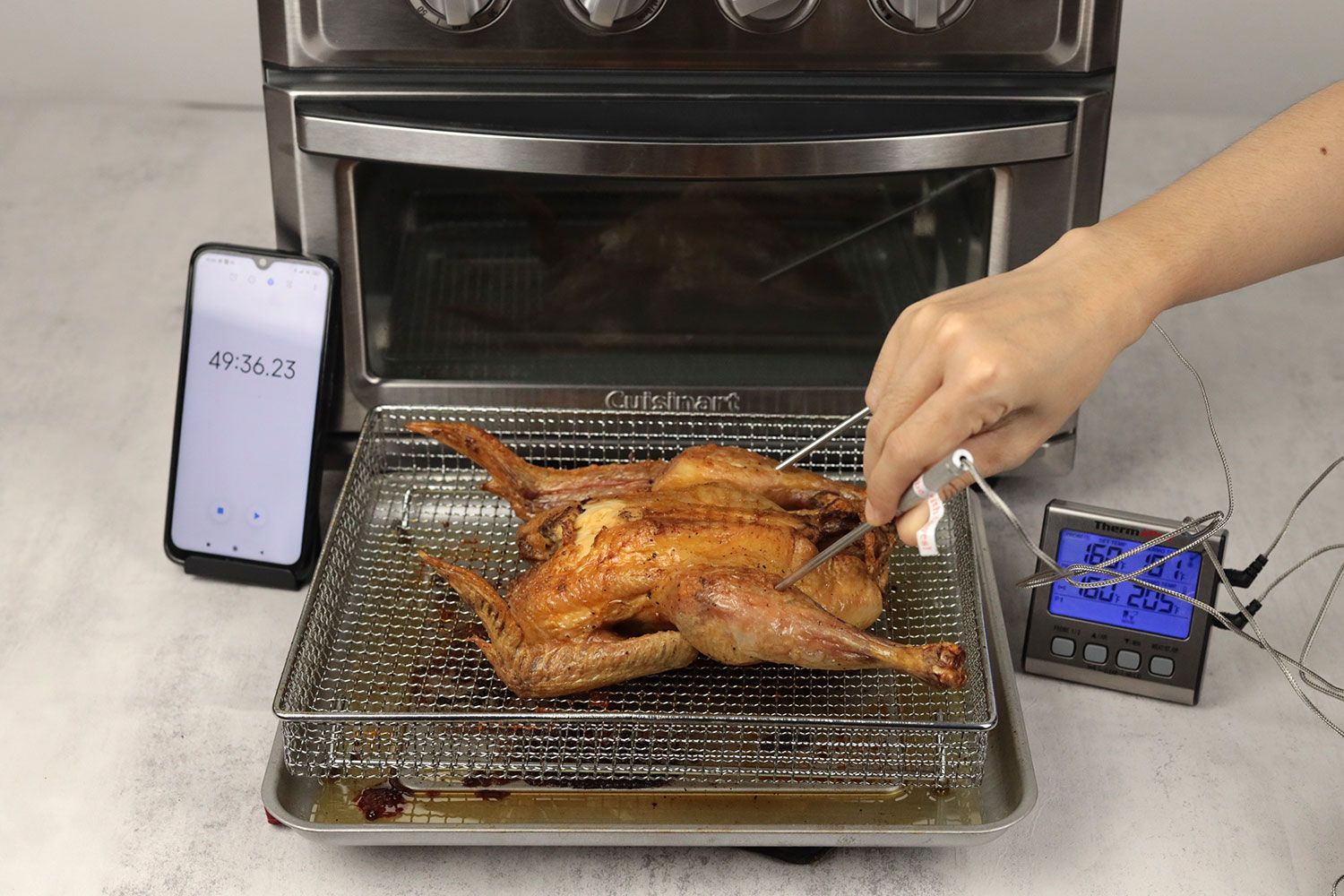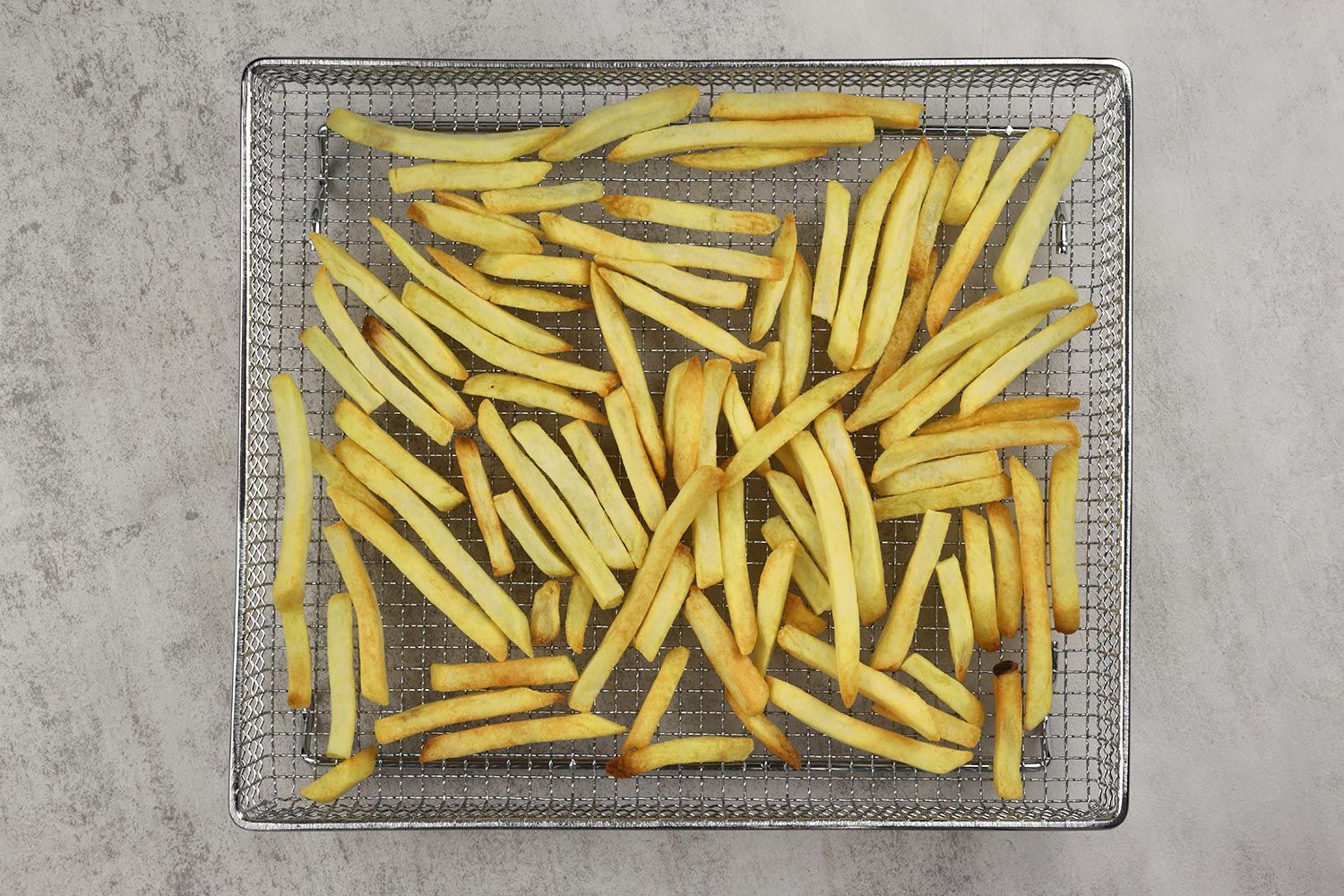Our recommendations are made independently. We may receive commissions from purchases made via our links.
Toast Test for Toaster Ovens
Check out how we test making toasts with our toaster ovens. Choose the toaster oven for the best medium toasts of your preference.
This test is part of How We Tested Our Toaster Ovens v1.0
Easy and straightforward toast without having to buy a separate toaster is one of the main selling points of a toaster oven. This is why the test for making toast takes up 40% of our performance score for a toaster oven.

Our test concludes, for each oven, which toast level to produce the best medium toast using white bread. We also compare the results to find the ultimate toaster oven for making toast. With this test, we hope to help you choose, from the best toaster ovens, one to suit your toast preference.
How to Get the Perfect Toast
To come up with the actual test for making toasts with toaster ovens, we tried different approaches and ran into a series of problems. In the end, we were able to standardize the preparations and the steps to execute the test. Here is how we test making toast with our toaster ovens.
Bread
We only use slices of white bread that are roughly the same weight and stored at room temperature. Even though many toaster ovens claim to fit six pieces of toast, they rarely do. So, we opted for four pieces, which even the smallest models can fit, to also assess the oven’s heat distribution.
We place the toast on a baking rack to also test the crumb tray; baking pans are usually smaller and prevent the bottom of the toast from browning. We also don’t use air frying accessories because toasting bread on them is similar to on baking racks.
Toast Level
Toaster ovens have a range of toast levels depending on each model, so we first test the middle level. From there, we can decide if we should increase or decrease the level until we find the best option for each oven and score it based on our predetermined factors. The best option here refers to the level that produces the (closest to) perfect medium toast, which is what most people prefer.
We take sample photos of three tested toast levels including the best, one level lighter, and one level darker from the best, that you can use as a reference. We don’t preheat the toaster ovens when making toast as it isn’t necessary.
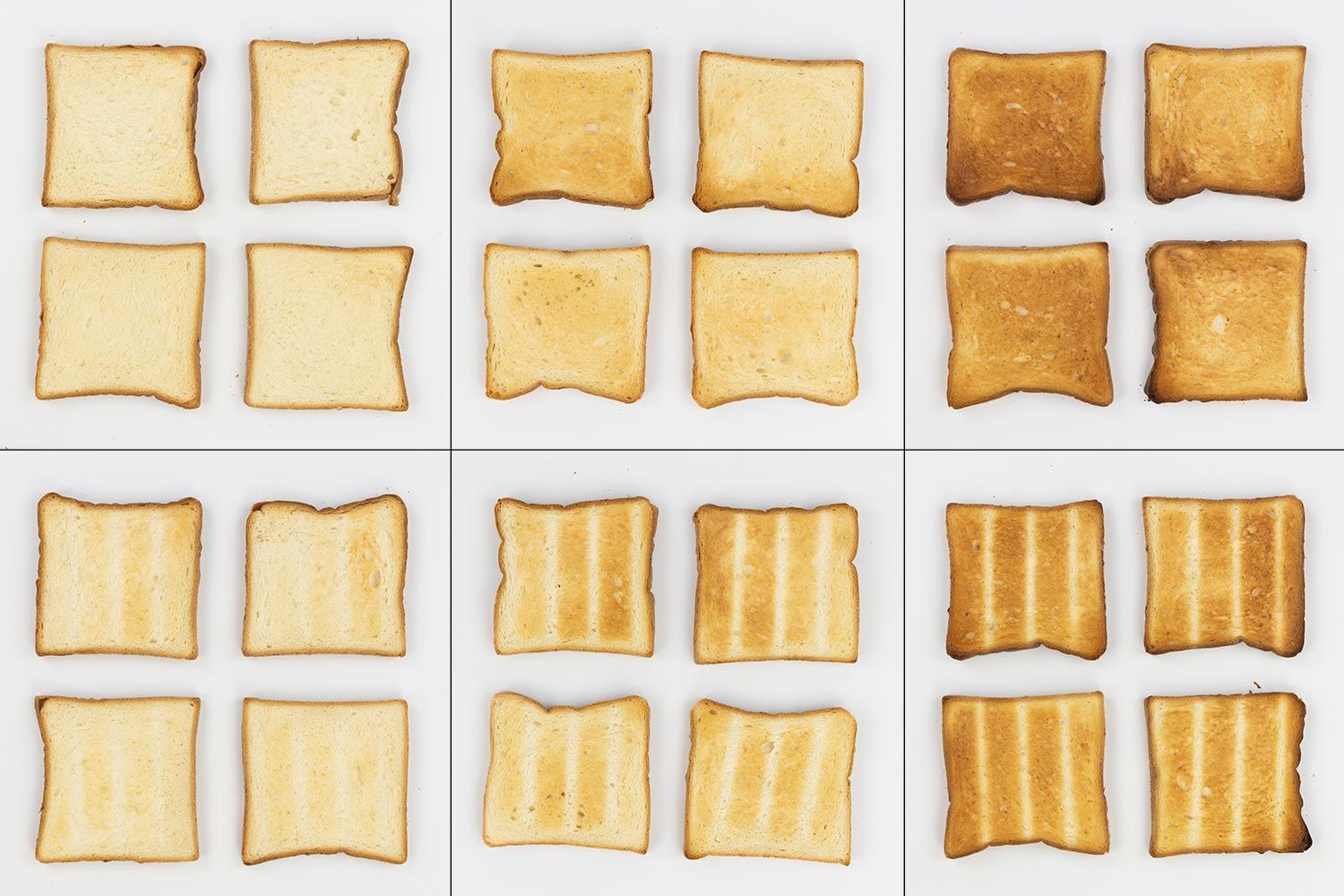
Scoring Table
Initially, our scoring criteria were cooking time, temperature precision, outer crispiness, inner moisture, and even surface color. We tried to formulate statistical numbers to score each factor on a scale of 1-10.
However, we realized, as we repeated the test numerous times, that we couldn’t standardize the score based on those factors. The cooking time and temperature greatly affected the outer crispiness, inner moisture, and even surface color. So, it was hard to score them separately.
In the end, we decided on the surface color, taste test, and consecutive usability which we detail below.
Testing Equipment
- Smartphone timer: Timing is a crucial factor when cooking any recipe and using any equipment, not just a toaster oven. Therefore, we measure the cooking time required to reach the desired results using a smartphone timer. We also check if it matches the preset timer if available.
- Oven thermometer: Temperature is another key aspect of cooking, especially with toaster ovens. So, we use a thermometer to keep track of the oven’s internal temperature. We also check if it matches the preset temperature if available.
- Camera: We recorded all the testing procedures on camera.
Steps
- For each oven, we run a test of the three levels, each with 4 pieces of toast. After examining the results, we choose the best medium toast level with which to perform the remaining steps.
- We place 4 pieces of toast of roughly the same weight and stored at room temperature on the baking rack. Then, we place a thermometer inside the oven and choose the selected toast level. We also use a smartphone timer when not provided by the oven.
- After toasting’s done, we first check for an even surface color and take photos.
- Immediately afterward, while the oven’s still hot, we repeat the first two steps to check consecutive usability.
- We have a taste test with a group of four people including our head chef and finalize the score.
How We Score
As mentioned above, the toast test takes up 40% of the performance score. Scoring factors are Surface Color (20%), Taste (50%), and Consecutive Usability (30%). Each factor and the final score are presented on a scale of 0 to 10.
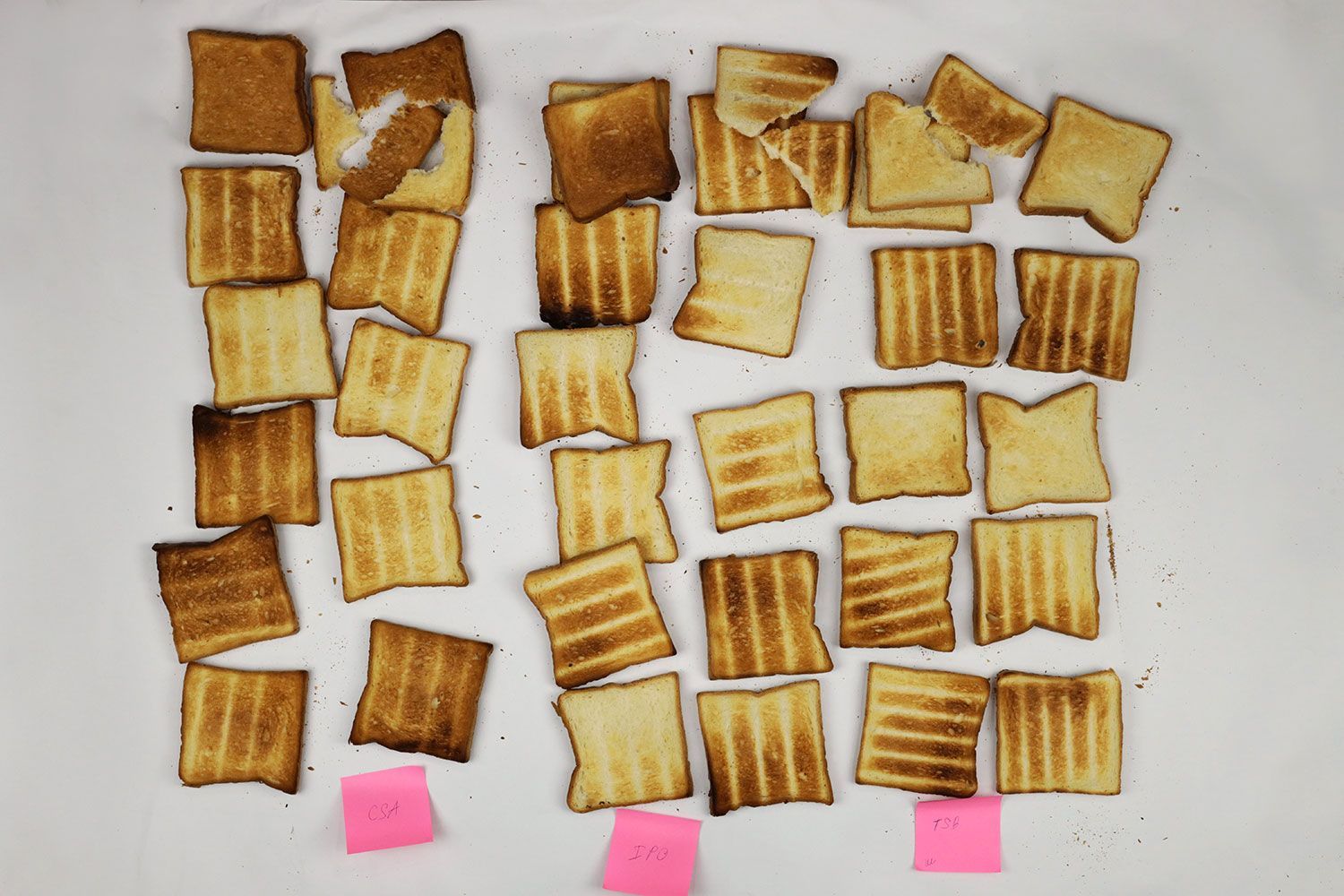
Surface Color
For the even surface color test, we simply check with visual proof (photos). For some reason, most toaster ovens’ toast function doesn’t activate the convection system. While this ensures a stable temperature, it’s harder to get an even surface color on the toast. So, an oven that allows for convection deployment during the toast function would most likely have a higher score for even surface color.
- 10/10: Golden / 100% even
- 9/10: Golden / 90% even

- 8/10: Golden Brown / 90% even
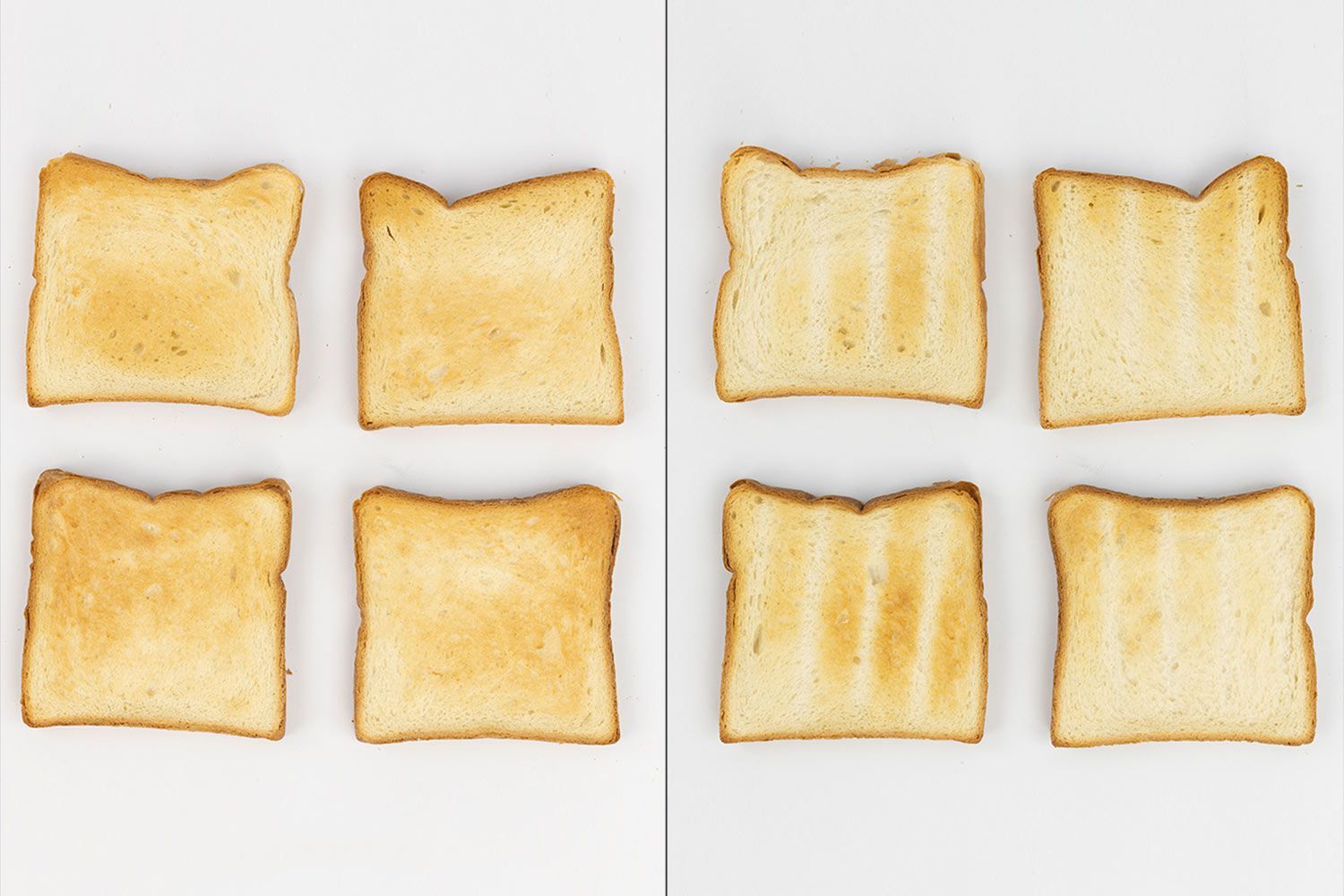
- 7/10: Golden Brown / 80% even

- 6/10: Light Golden or Light Brown / 70% even....
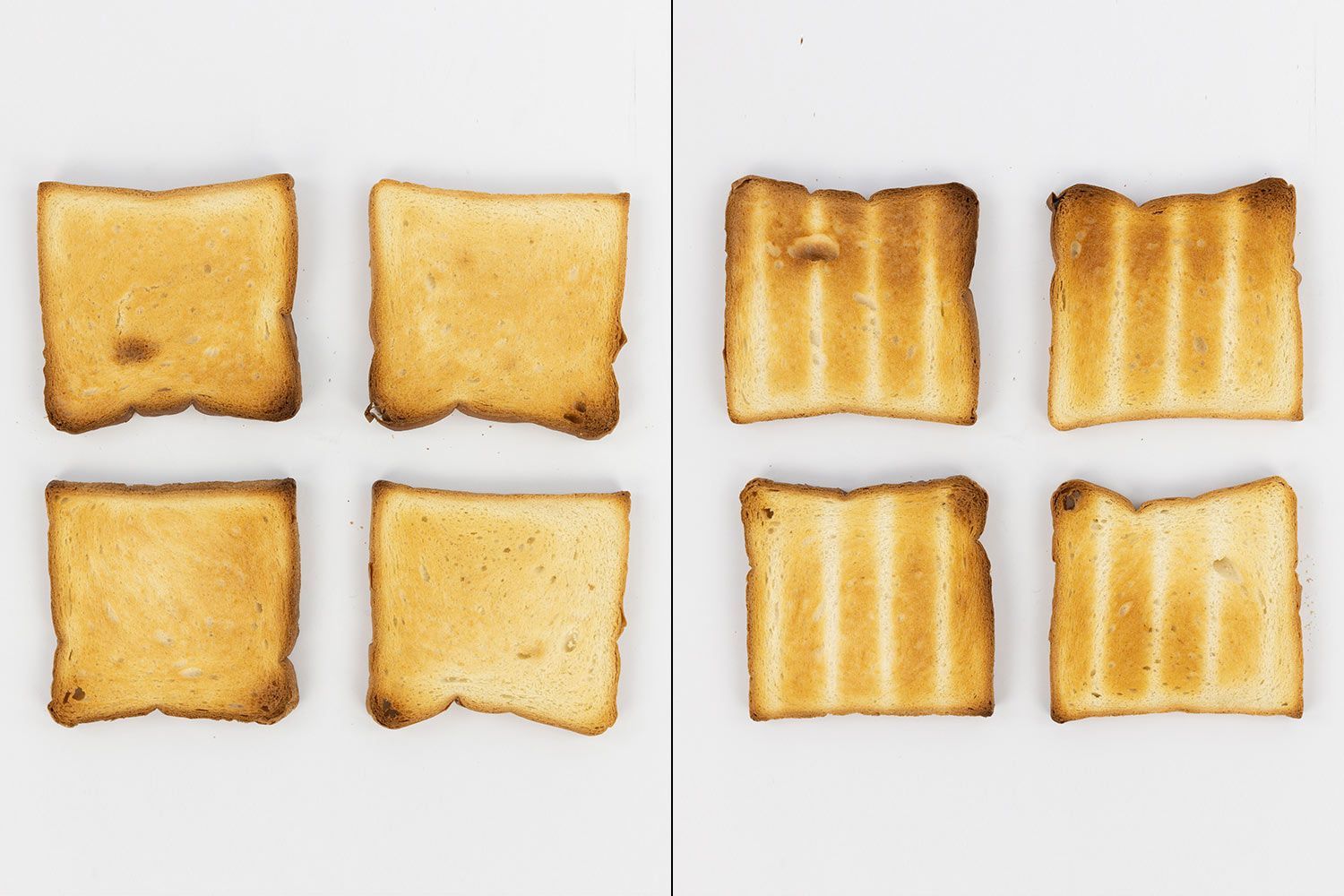
- 5/10: Light Golden or Light Brown / 60% even
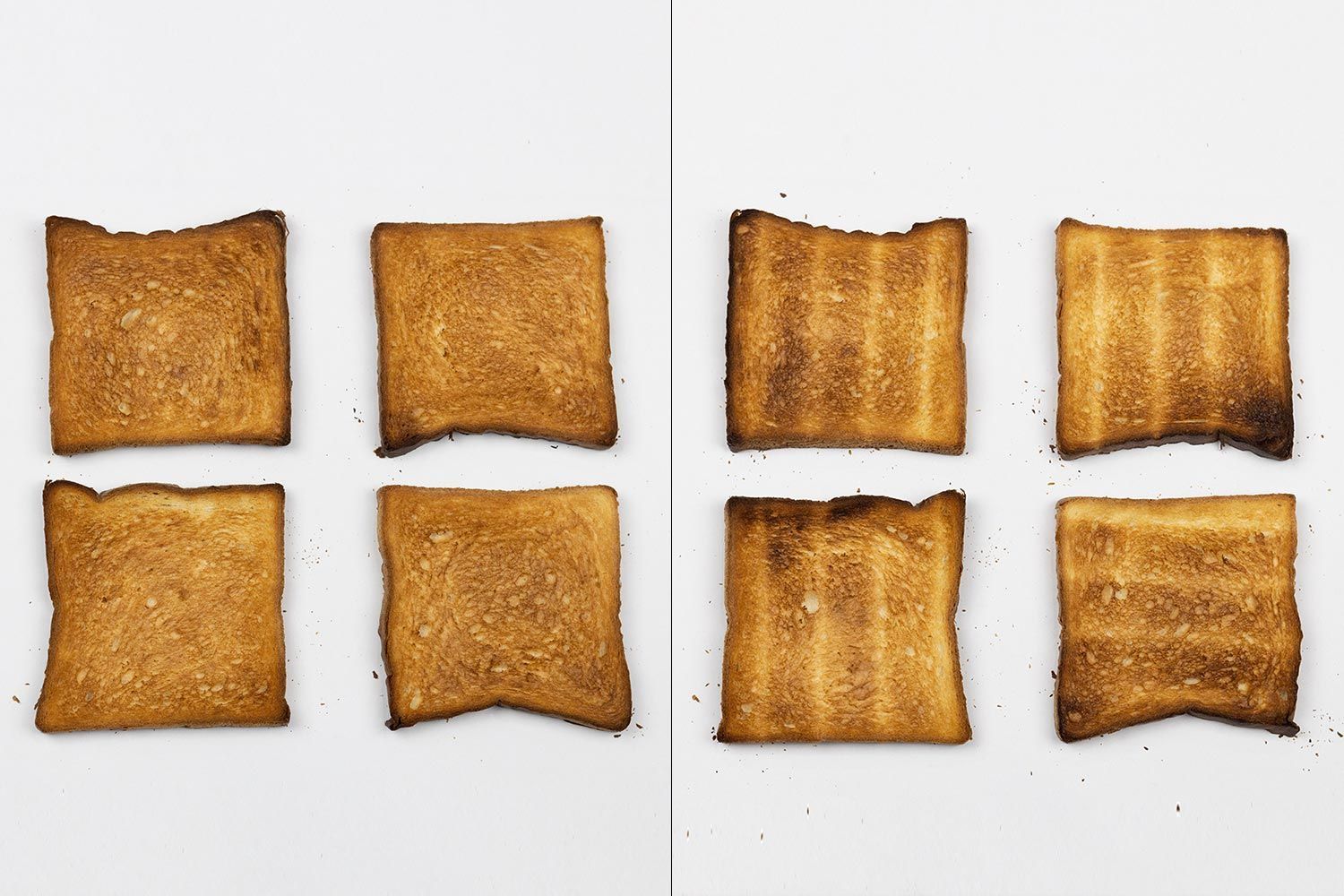
- 4/10: Light or Brown / 50% even

- 3/10: Light or Brown / 40% even

- 0: No Color or Burnt / < 30% even
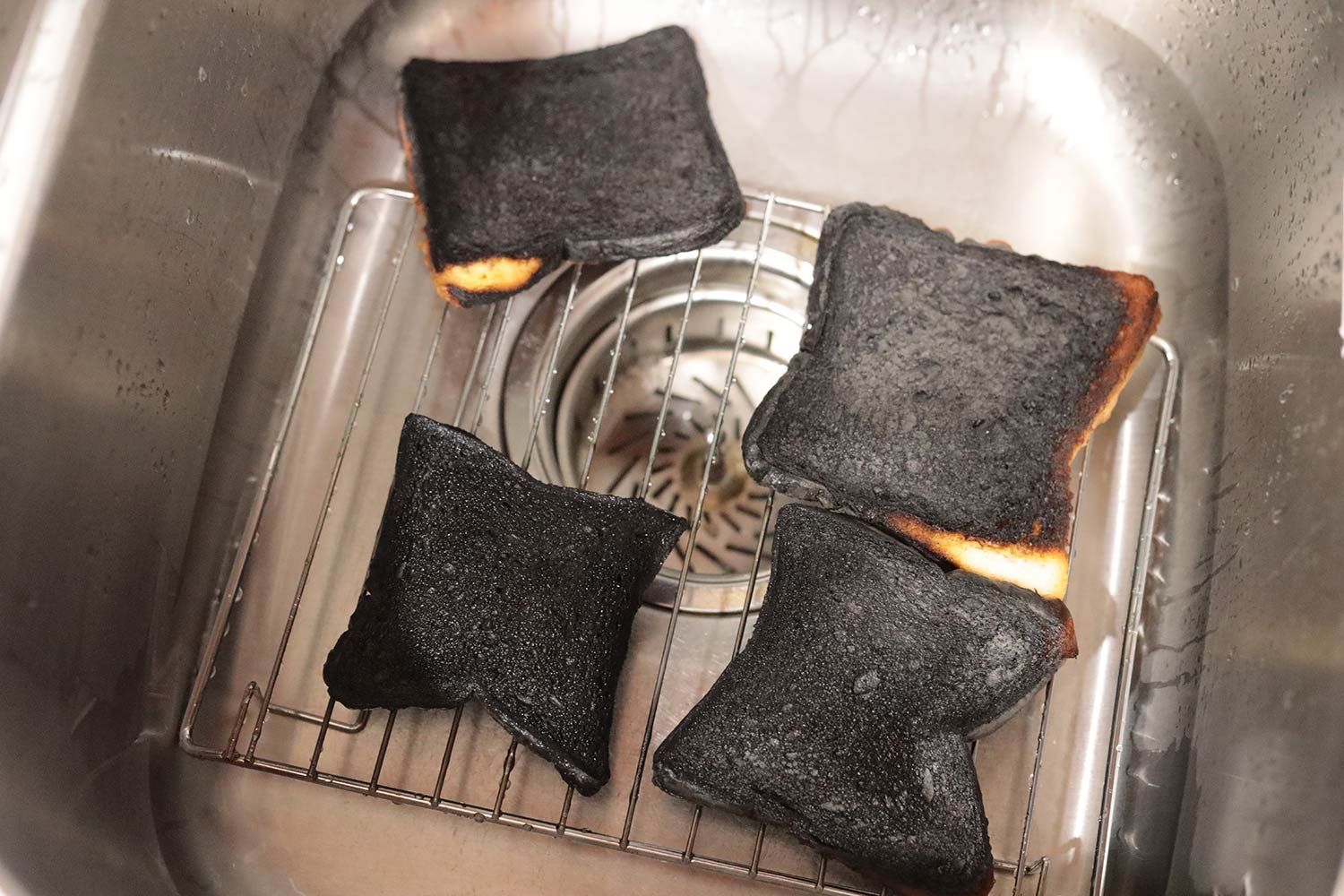
Taste
Deliciousness is a mostly subjective but essential criterion to evaluate food, not just toast. For a diverse range of opinions, our team of judges includes one professional chef and three foodies.
With years of experience and many professional awards under her belt, Tuyet Pham, our head chef, decides our scoring table. She scores the resulting toast based on how well they accompany four common dishes including a sandwich, an omelet, eggs benedict, and soup.
Nonetheless, there are still some further aspects that we can use to clarify our evaluation.
- A cooking time longer than necessary can result in burnt and dry toasts. Meanwhile, a shorter time can result in uneven color and a lack of crispiness.
- A higher cooking temperature than necessary can result in burnt toasts that are moist inside. Meanwhile, a lower temperature can result in a lack of color and crispiness.
- Usually, the crispiness increases corresponding to the toast’s coloring from light to dark. However, after the toast reaches a dark brown color, it’ll only get harder, even burnt, and not crispier.
- Burnt toast almost always has an unappetizing bitter taste.
Consecutive Usability
If you’re making toast for your family, you’ll probably make more than four pieces or one batch at a time. You’re also likely to keep the same level to continue making your toasts.
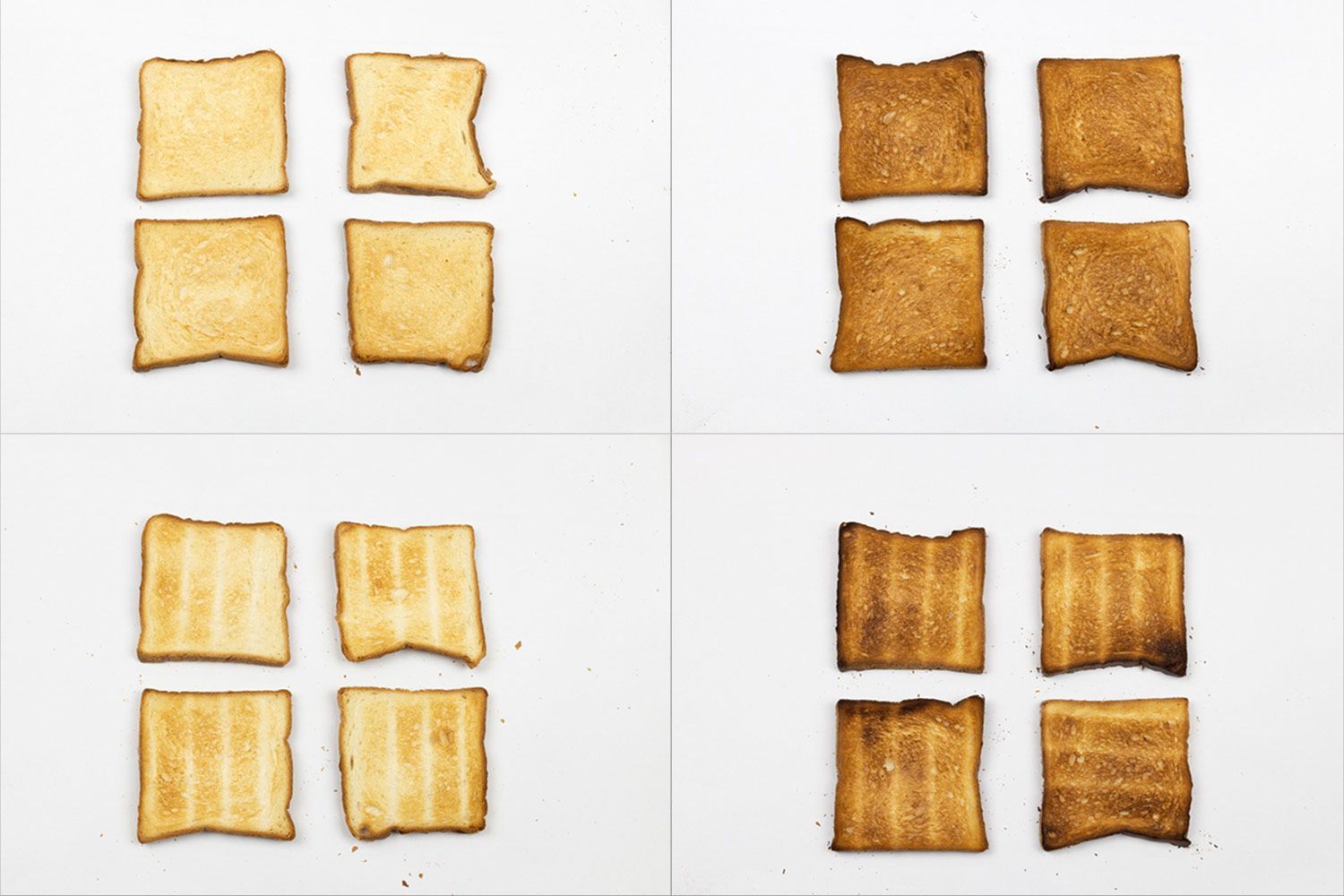
A toaster oven’s toast function is designed to eventually reach 450°F as long as you don’t stop cooking. However, that can easily produce burnt toast if you don’t have prior experience.
This is why we test how good a second batch is at the same toast level. We stop after the second batch because 8 pieces are likely to be enough for one family meal. The evaluation is also based on surface color and taste.
For bigger toaster ovens that can fit more than four slices at once, we still keep the same number of slices for the sake of comparison between each product.
